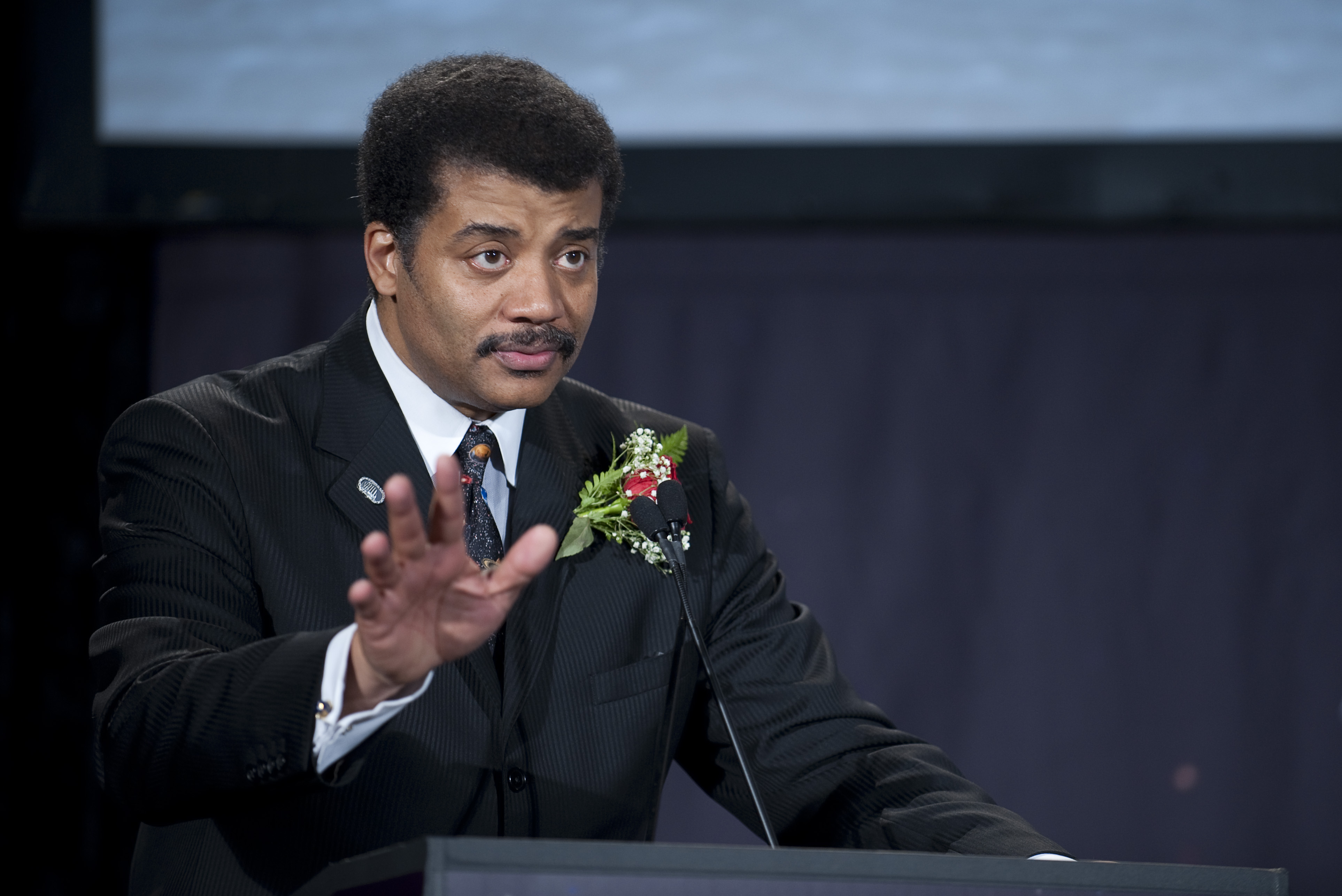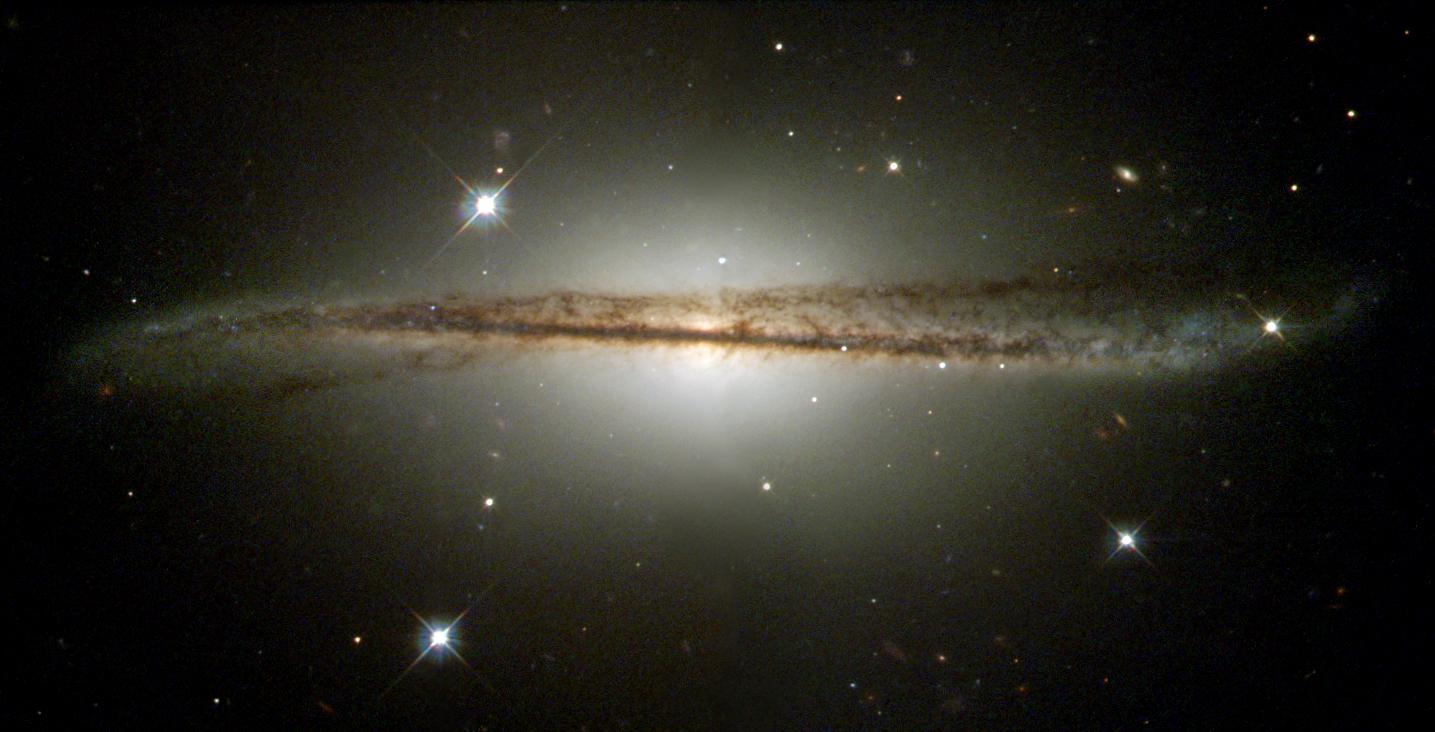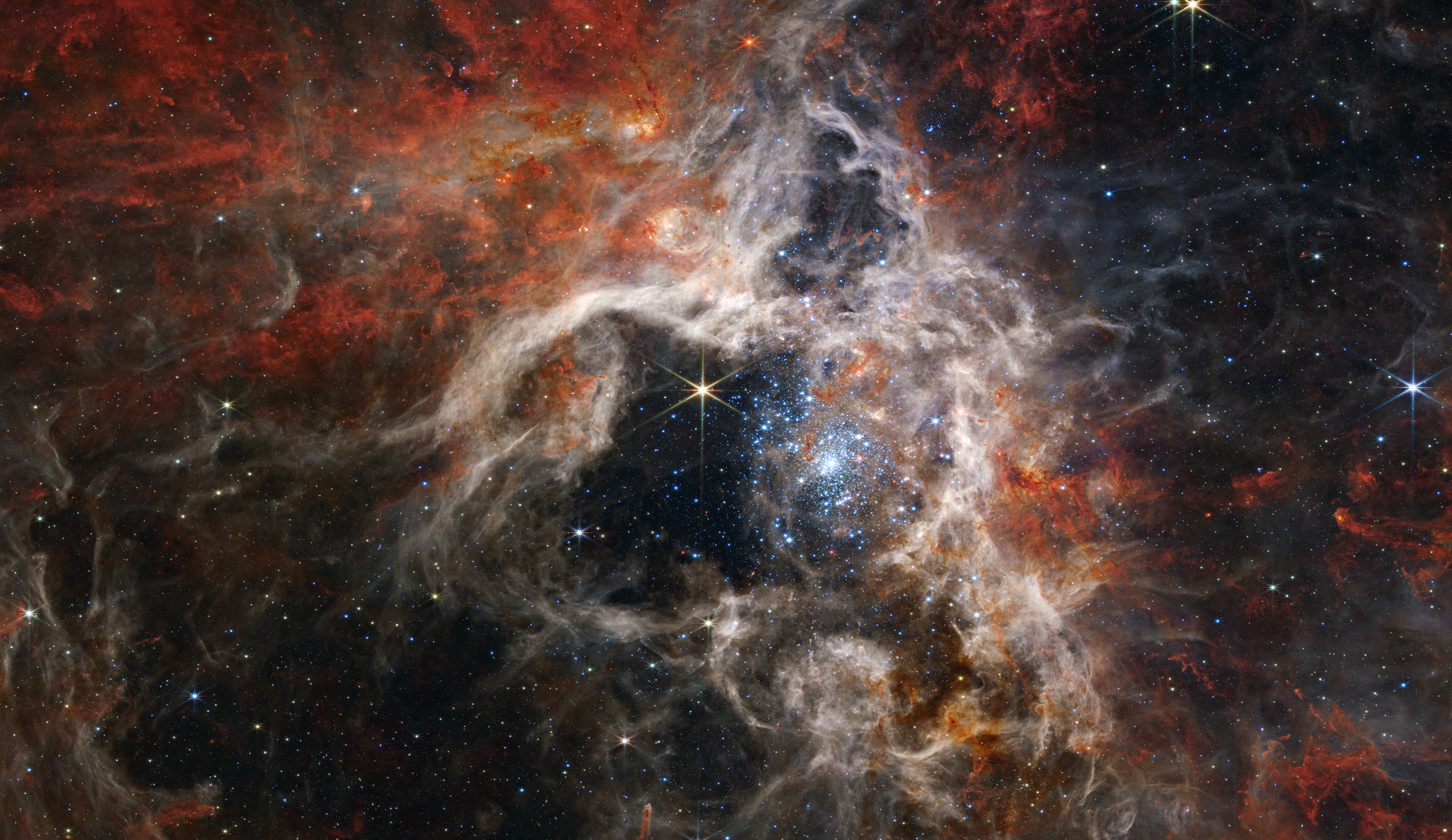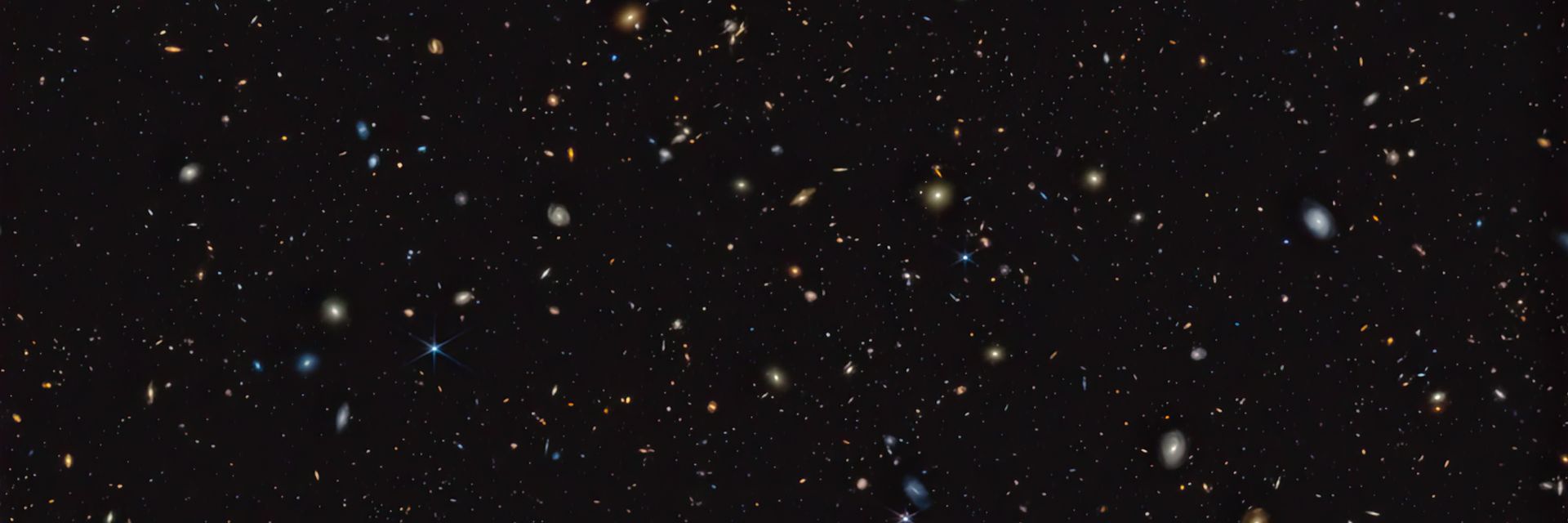Some have predicted the end of the Big Bang Theory based on data from the James Webb Space Telescope. But don’t worry, the JWST’s evidence actually supports the theory.
◊
It had all the makings of a first-class disaster flick. Its beginning was small, almost too easy to overlook. In July 2022, a team of academics led by Leonardo Ferreira published a paper in Cornell University’s astrophysics journal, arXiv. The first warning sign was its title: “Panic! At the Discs.” You’d think the authors would have considered that not every reader would get the allusive joke and make the connection to the emo-pop musical group Panic! at the Disco. But they published it anyway.
The provocative paper deals with “galaxy structure in the relatively early Universe,” as imaged by the newly activated James Webb Space Telescope. In brief (and probably over-simplified), the scientists examined the images of deep-space galaxies and were surprised at the number of disc galaxies, i.e., a galaxy that appears like a flat disc (not dissimilar to our own galaxy’s spiral form).
That’s when the firestorm – or let’s call it what it looked like, a panic – started to spread on social media. Ah, social media – that hotbed of specious claims and conspiracy theories. Numerous alarmed posts started to pop up on sites like Twitter and Instagram claiming that the large number of unexpected disc galaxies threatened the foundational theory of the Big Bang.
For a closer view into the deepest regions of space as imaged by the James Webb Space Telescope, watch MagellanTV’s Search for the Cosmic Dawn.
Social Media Fans the Flames of Big Bang ‘Controversy’
Many querulous posters argued for the collapse of the theory, since disc galaxies are thought to take billions of years to develop, and these new discoveries were observed only a few hundred million years after the Big Bang was thought to have occurred.
The swarm of posts reached its apex, so to speak, with a YouTube video titled, “SHOCKING! NASA Scientists Reveal BIG BANG Never Happened.” The promo image for this video, from fall 2022, features its host on the left, and, on the right, a Photoshopped rendering of Elon Musk and Mike Pence standing behind a NASA podium. (If you think such an image inspires confidence in the trustworthiness of the video, perhaps a little consumer education would be helpful.)
The presenter speaks with a hurried intensity. He goes through all the “evidence” gleaned from social media and appears confident that the history of science needs to be revised, if not thrown out the window completely. Not surprisingly, this baffling video has been viewed more than 1.1 million times.
Neil deGrasse Tyson Slays the Dragon of Scientific Ignorance
At this point, astrophysicist Neil deGrasse Tyson felt compelled to jump into the fray, which he did in another YouTube video provocatively titled, “Is the Big Bang Theory Wrong?” In this video, which also boasts 1.1 million views, Tyson doesn’t deal directly with the details of the Big Bang deniers’ claims. Rather, his argument is that the tenets of the Big Bang are thoroughly supported by observations.

Neil deGrasse Tyson, American astrophysicist and director of the Hayden Planetarium at the American Museum of Natural History (Credit: NASA/Bill Ingalls, via Wikimedia)
Science, he patiently explains, is always in flux; however, the progress of scientific knowledge is not a win-or-lose proposition. Rather, using the scientific method means that all scientific claims can be challenged at any time. The “winners” are not those propositions that are most fervently promulgated, but those with the best scientific evidence.
Tyson uses the example of Einstein’s theories of relativity and their proposition that Newton’s laws of gravity are not always accurate in describing the behavior of certain heavenly bodies, e.g., the movements of the planet Mercury. Rather than throwing out Newtonian physics, however, Einstein “enclosed” Newton’s laws within his own theories. Scientific progress, Tyson showed, is never made by throwing out old theories of knowledge supported by reproducible, observable evidence. Progress is made by adding to what’s known.
Separately, the lead author of the original Cornell University paper that sparked the firestorm, Leonardo Ferreira, responded to all the so-called “space enthusiasts” with a stern Twitter post saying, “Please stop incorrectly using our work to say that the big bang ‘didn’t happen.’ That’s incorrect, and only shows you did not read the paper. This is work on the evolution of galaxies. In fact, it is made possible due to the redshifting light in an expanding big bang universe.”
Astronomers use the term “redshifting” to describe how light frequencies change hue because of the expanding universe. The farther away the source is, the more time the universe has had to expand, and the more the frequency is stretched out toward red.
So, What’s All the Hubbub About, Anyway?
American cosmologist and author Carl Sagan once stated, “Extraordinary claims require extraordinary evidence.” So, let’s examine the findings of Leonardo Ferreira and other astronomers who have analyzed evidence supplied by the James Webb Space Telescope (JWST). Just by doing this, we’ll be ahead of the social media posts that stirred up the pot of doubt and confusion over our cosmological beginnings.
Ferreira and his team’s paper, “Panic! at the Discs,” analyzed a total of six very bright and very distant galaxies imaged by the JWST. These galaxies are remarkable because they appear extraordinarily mature and massive when compared with expectations for galaxies of that age. Generally speaking, astronomers have agreed that only “little baby” galaxies could have evolved less than a billion years after the Big Bang. These small galaxies would project much less light, be much less densely packed with stars, and less well-organized.
However, these galaxies appear to have a solar mass billions of times greater than our Sun (a basic measure of mass), and one galaxy in particular appears to have a solar mass 100 billion times greater than the Sun. Of course, the current analyses are all dependent on the first data set produced by the JWST in July 2022, only a few weeks prior to Ferreira and his team’s publication.

Galaxy Eso 510 g13 is an example of a disc galaxy. (Credit: NASA/Space Telescope Science Institute)
An alternate theoretical analysis of the images surmises that they actually show relatively small galaxies with extremely bright black hole accretion activity at their centers. This would still be a very remarkable finding, since the earliest known black holes only appear approximately one billion years after the Big Bang, and these galaxies date back to between 350 million and 750 million years after the beginning of the Universe.
But the point is clear: More research is necessary to validate the analyses of these early galaxies. Yet, even so, the findings do not seriously challenge the Big Bang Theory. In fact, the “redshifting” observations from the distant galaxies appear to support the theory. The following section shows just why.
Just What Is the Big Bang Theory?
As described on NASA’s James Webb Space Telescope website, many people’s conceptions of the Big Bang are misguided. In fact, even the term “Big Bang” is misleading. Rather than a “firecracker” that exploded from a central point, spreading matter in every direction 13.8 billion years ago, the “bang” was actually a singular event that happened everywhere, all at once.
Our larger theory of cosmic origins, commonly referred to as “the Big Bang,” flows from observations made by the astronomer Edwin Hubble in the 1920s. He found that distant galaxies are all moving away from us. The more distant they are, the faster they are receding. Writer and director of Search for the Cosmic Dawn: The James Webb Space Telescope, Thomas Lucas, stated, “Recent observations suggest that the early universe was dominated by invisible, slow-moving particles known as ‘dark matter.’ Gravity drew dark matter into clumps, along with atoms created in the wake of the Big Bang.”

The Tarantula Nebula star-forming region imaged by the James Webb Space Telescope. (Source: NASA, ESA, CSA, STScI, Webb ERO Production Team, as seen in the MagellanTV documentary Search for the Cosmic Dawn)
“In time,” Lucas, who co-founded MagellanTV, added, “these simple hydrogen atoms came together in dense centers that gave rise to the first stars. Millions of years later, groups of stars formed galaxies. The largest of these early stars collapsed and exploded, forming black holes that dominated the centers of galaxies.”
So, the question is not whether the theory is accurate; rather, it becomes a question of discovering, through future observations and research, just how these very bright galaxies came into existence so soon after the Big Bang. Right now, theories are being developed that attempt to explain what the JWST recorded. In time, as data accumulates, we will learn more, in more detail, about what these early observations mean.
The Scientific Method Is Solid and the Big Bang Theory Is Intact
There’s no need to worry. The JWST will continue its search for data on early galaxy formation for the rest of its active lifespan. What it’s turned up so far is fascinating and challenging, but it’s merely the prologue for more discoveries to come. As the space telescope is focused on what happened in the universe approximately 300 million years after the Big Bang, it’s bound to reveal more surprises about that era in spacetime. And, if we continue to trust in the scientific method, we’ll be rewarded with more discoveries that will inform, or even modify – but probably not replace – the theory of the Big Bang.
Ω
Kevin Martin is Senior Writer for MagellanTV. He writes on various topics, including outer space, the fine arts, and modern history. He has had a long career as a journalist and communications specialist with nonprofit and for-profit organizations. He resides in Glendale, California.
Title Image: This image shows a portion of an area of the sky known as GOODS-South. It was taken for the JWST Advanced Deep Extragalactic Survey, or JADES. (Source: NASA, ESA, CSA, Brant Robertson [UC Santa Cruz], Ben Johnson [CfA], Sandro Tacchella [Cambridge], Marcia Rieke [University of Arizona], Daniel Eisenstein [CfA], Alyssa Pagan [STScI])

